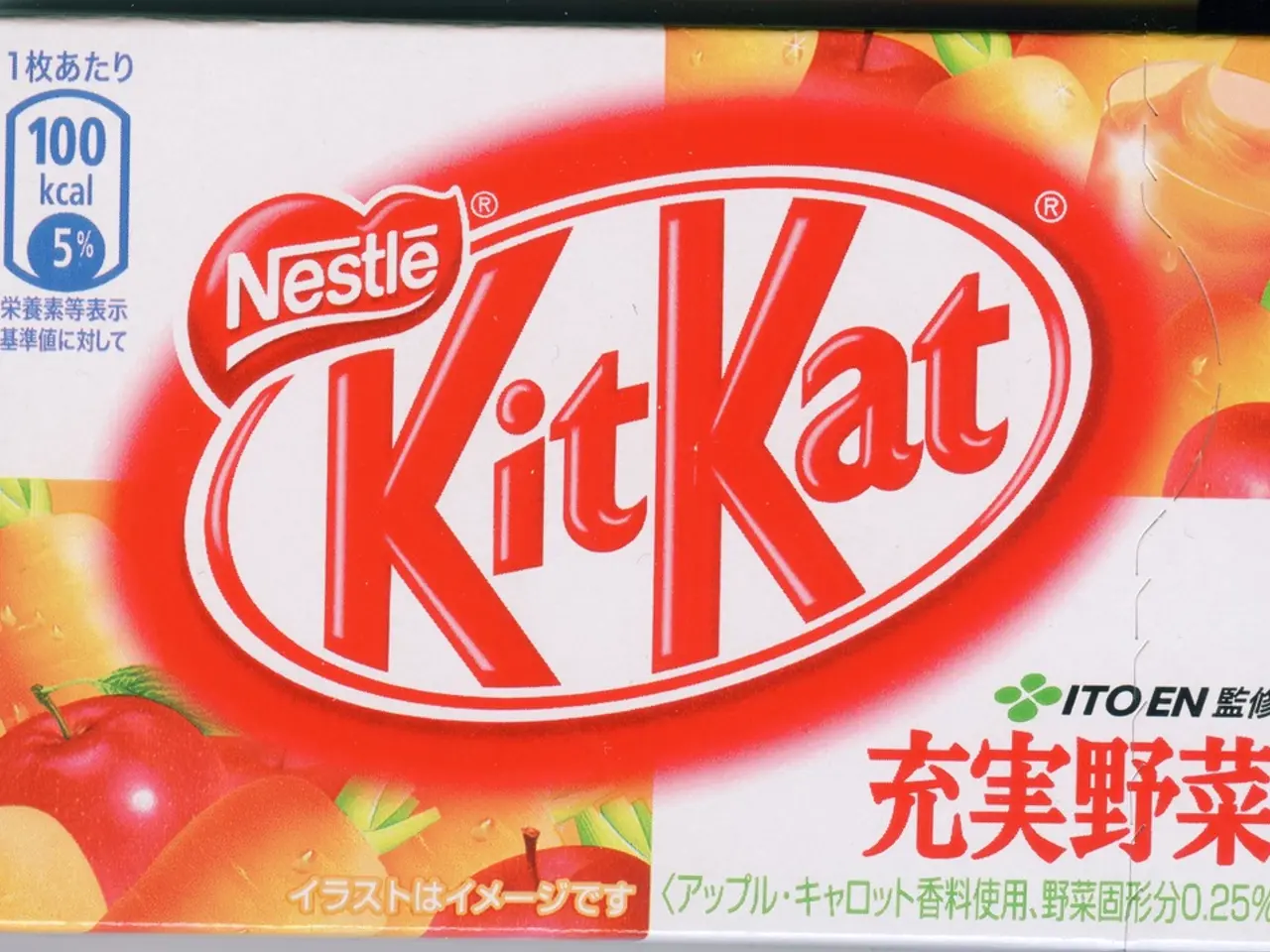Serving Up Nutrition: Fruits According to MyPlate Guidelines
The U.S. Department of Agriculture's (USDA) MyPlate food guidance system encourages individuals to fill half their plates with fruits and vegetables at each meal [3]. This initiative aims to help people make smart choices from every food group.
According to the MyPlate recommendations, the daily fruit intake varies based on age and gender. For instance, children aged 2-8 may need about 1 to 1.5 cups of fruit per day, while adult men often require about 2 cups daily, and adult women about 1.5 cups [1][5]. These amounts can be adjusted based on personal calorie intake and activity level for more precise guidance.
MyPlate's guidance emphasizes consuming a variety of fruits to meet nutritional needs. Fruits are rich in dietary fiber, vitamin C, potassium, and folate (folic acid) [7]. They are naturally low in fat, sodium, and calories and do not contain cholesterol.
Fruits can be enjoyed in various forms, including fresh, canned, frozen, or dried. They can be whole, cut-up, or pureed, making them a versatile addition to meals and snacks. For example, a smoothie made with fruit and low-fat milk or yogurt is a suggestion [1].
When choosing canned fruits, it's best to select those packed in 100% fruit juice to limit added sugars. A medium pear is equivalent to one cup of fruit, as is one large orange, one large peach, one small apple (2.5 inches in diameter), one wedge or one cup of watermelon chunks, and thirty-two seedless grapes [2].
One cup of 100% fruit juice is equivalent to one cup of fruit [4]. However, while 100% fruit juice can be part of a healthful diet, it lacks dietary fiber and can add extra calories when consumed in excess.
MyPlate includes an interactive, online guide that provides individuals with recommended food amounts to eat, based on gender, age, and physical activity level [6]. For more detailed information, the recommended food amounts can be found at choosemyplate.gov.
In addition to the health benefits associated with fruit consumption, eating fruit provides a reduced risk of some chronic diseases like heart disease, stroke, and certain cancers [8]. A snack option could be 100% applesauce topped with raisins.
The original authors of the information are Linnette Goard, M.S., Cindy Oliveri, M.S., and Michelle Treber, L.D., M.A., Extension Educator, Family and Consumer Sciences, Ohio State University Extension [1]. The Dietary Guidelines for Americans 2020-2025 recommend about one cup-equivalent of fruit per 1,000 calories consumed, which aligns with the MyPlate system's tailored recommendations [5].
In conclusion, incorporating fruits into your daily diet is essential for maintaining a balanced and healthy lifestyle. MyPlate's recommendations provide a practical guide for achieving the right fruit intake based on individual factors.
References: [1] Goard, L., Oliveri, C., & Treber, M. (2014). MyPlate: Make Half Your Plate Fruits and Vegetables. Ohio State University Extension. Retrieved from https://ohioline.osu.edu/factsheet/HYG-5000 [2] ChooseMyPlate. (n.d.). Fruits. Retrieved from https://www.choosemyplate.gov/fruits [3] U.S. Department of Agriculture. (2011). MyPlate Food Groups. Retrieved from https://www.choosemyplate.gov/myplate-food-groups [4] U.S. Department of Agriculture. (2014). MyPlate Daily Checklist. Retrieved from https://www.choosemyplate.gov/myplate-daily-checklist [5] U.S. Department of Agriculture and U.S. Department of Health and Human Services. (2010). Dietary Guidelines for Americans, 7th ed. Washington, DC: U.S. Government Printing Office. [6] U.S. Department of Agriculture. (n.d.). MyPlate Plan. Retrieved from https://www.choosemyplate.gov/myplate-plan [7] U.S. Department of Agriculture. (2014). Nutrient Content of Foods. Retrieved from https://www.choosemyplate.gov/food-groups/nutrient-content.html [8] U.S. Department of Agriculture and U.S. Department of Health and Human Services. (2020-2025). Dietary Guidelines for Americans, 9th ed. Washington, DC: U.S. Government Printing Office.
- Engaging in a health-and-wellness lifestyle that prioritizes nutrition often includes making smart choices from the food groups, as per the recommendations provided by the U.S. Department of Agriculture's (USDA) MyPlate food guidance system.
- Consuming a variety of fruits, recommended by MyPlate, can help individuals meet their nutritional needs, as fruits are rich in essential nutrients such as dietary fiber, vitamin C, potassium, and folate.
- Integrating fruits into one's lifestyle can provide health benefits that reduce the risk of chronic diseases like heart disease, stroke, and certain cancers. For instance, a snack option could be 100% applesauce topped with raisins.
- The cooking and food-and-drink sector can capitalize on this trend by offering recipes and products that cater to the demand for healthier food options, such as smoothies made with fruit and low-fat milk or yogurt, or 100% fruit juice in moderation.




